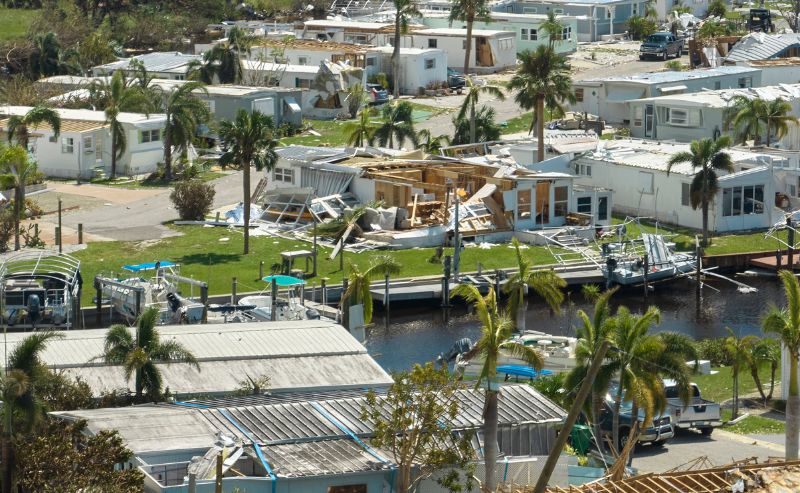Hurricane Ian was a storm for the record books. It not only battered Puerto Rico and wreaked havoc across Florida but also struck the Carolinas over a matter of days. The storm claimed the lives of well over 100 people and left behind what many have described as looking like a “war zone.” The damage and economic loss from Hurricane Ian will likely surpass that of Hurricane Harvey (2017) at $190 billion. Still, residents, volunteers, businesses, public safety agencies, state and local governments, FEMA, and countless others are working together to support the hundreds of communities impacted by the massive category 4 storm. Collaboration is crucial to recovery and resilience following natural disasters, particularly those of such magnitude.
Take Hurricane Sandy (2012), for example. It struck the East Coast of the U.S., resulting in severe impacts and substantial damage to the New York, New Jersey, and Connecticut regions. As described in FEMA’s Collaborating to Build Resilience: Hurricane Sandy, 2012, transportation networks were essentially shut down, major airports were closed, and subways, rails, tunnels, and bridges across the region were severely impacted. Over 23,000 people were temporarily displaced, and the damage from the storm totaled over $70 billion. And like Hurricane Ian, Sandy’s eventual death toll climbed above 100 (117 as reported by USA Today, May 2013).
Shortly after Hurricane Sandy, then-President Obama established the Hurricane Sandy Rebuilding Task Force to facilitate regional collaboration. The rebuilding strategy directed all federal agencies and recovery partners to work together to rebuild stronger and smarter, focusing on resilience outcomes rather than simply restoring to pre-disaster conditions. As a result, the task force created the Sandy Recovery Office (SRO) and the Sandy Regional Infrastructure Resilience Coordination (SRIRC) Group.
The SRIRC comprised 32 federal, state, and local government representatives, including grant managers, project managers, environmental review experts, and other relevant subject matter experts. It collected data on the status of nearly 400 projects, totaling over $27 billion in project costs. (As of January 2020, 149 projects were completed, and 125 were under construction.) The group contributed to better stakeholder coordination and efficiency in decision-making, including a renewed focus on enhancing resilience while sequencing projects to minimize duplication of effort and maximize collaborative planning.
Other SRIRC efforts produced maps and reports to inform work efforts, increase transparency, minimize delays, and create open lines of communication.
While we are only days into recovering from Hurricane Ian, the work of the Hurricane Sandy Rebuilding Task Force reminds us of the need for and benefits of collaboration following a disaster. Even though it will likely take years for the areas hardest hit by the storm to return to normalcy (or some semblance of it), one thing is true: Greater resilience is in the making now and for years to come.
To read more about the collaborative efforts of the Hurricane Sandy Rebuilding Task Force, visit https://www.fema.gov/case-study/collaborating-build-resilience.
On a similar note, FEMA recently released a new resource to help align community plans and build resilience. These plans specifically relate to hazard mitigation and economic development. When in sync, both can benefit communities in many ways, including businesses reopening more quickly and keeping critical facilities and infrastructure working during and after hazard events such as Hurricane Ian.
The guide is called the Comprehensive Economic Development Strategy and Hazard Mitigation Alignment Guide, and it is available online at https://www.fema.gov/sites/default/files/documents/fema_ceds-hmp-alignment-guide_2022.pdf.






